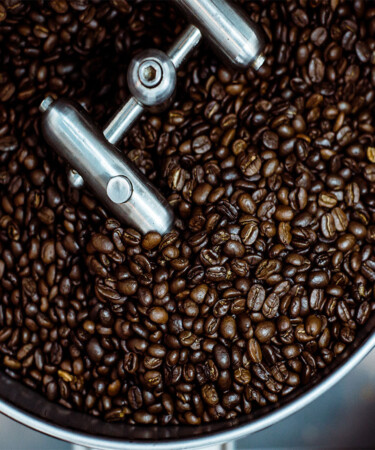Espresso heads have long argued over how to achieve the ideal pull, from which beans to use, how to grind them, and what snazzy machines to invest in. Now, a new study published in material sciences journal Matter seems to have identified the key to the perfect pull, and it’s much more simple — and inexpensive — than you might think.
According to the study, researchers discovered that adding a splash of water to coffee beans prior to grinding them results in a more delicious and more consistent espresso. The scientists say that this technique has the potential to help industrial coffee brewers and baristas alike overcome a major obstacle in brewing espresso.
“Water not only reduces static electricity and therefore reduces mess as you’re grinding, but it can also make a major impact on the intensity of the beverage and, potentially, the ability to access higher concentrations of favorable flavors,” says Christopher Hendon, associate professor of chemistry at University of Oregon.
The process of grinding coffee beans generates electricity through friction, which causes coffee grounds to lump together and remain in the grinder rather than making their way to the espresso machine. However, when water is added before the beans are ground, there is less friction between the beans and thus less electricity generated, resulting in less waste and a stronger concentration of flavor in each espresso shot.
During the study, researchers evaluated various types of coffee beans, considering their country of origin and color of the roast. Scientists also factored in various processing methods for coffee beans including whether or not they were washed and if they’re natural or decaffeinated. These factors were not found to have an impact on the amount of electricity produced during the grinding process.
In addition to determining that water can help concentrate flavors, researchers also determined that various grinding methods have an impact on the resulting espresso. In order to learn more about how electricity can affect the taste of the coffee, the study’s researchers teamed up with volcanic experts who examine electrical activity during eruptions. According to these scientists, the electricity generated during these volcanic eruptions is remarkably similar to that generated during coffee brewing.
“During an eruption, magma breaks up into little particles that come out of the volcano in this big plume. Those particles are rubbing against each other and charging up to the point of producing lightning,” explains Joshua Méndez Harper, an assistant professor of electrical and computer engineering at Portland State University. “In a simplistic way, it’s similar to grinding coffee, where you’re taking these beans and reducing them to a fine powder.”
As these scientists have seemingly determined that water can significantly improve the quality of espresso, they’re now focused on creating the perfect cup of joe.
“Now we know what grind settings to use to make reproducible espresso,” Hendon says. “We can start to try to understand what factors give rise to sensory differences in coffee taste.”
So, whether you’re pulling a shot for an afternoon pick-me-up or tossing it in an Espresso Martini, be sure to add a few drops of water before grinding for optimal enjoyment.
